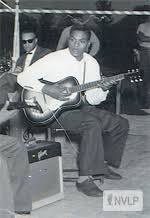“It don’t mean a thing if it ain’t got that go-go swing” is one of the many classic quotes that a DC/metropolitan area native would remix due to their altered reality of many mainstream trends. Formerly known as Chocolate City, Washington DC’s culture has been shaped by not only its politicians, but it’s entrepreneurs, fashion designers, drug dealers/criminals, artists, actors, and musicians. Namely, Charles Louis “Chuck” Brown who birthed an entire genre of music called Go-go. Born on August 22, 1934 in Gaston, North Carolina, Brown’s mother was a housekeeper and his father was a marine, and also not present in Brown’s life. At the age of 6, Brown and his mother moved to Washington DC, where he served as a preacher from ages 11 to 13 and played the piano in church. As for academic endeavours, Brown quit school after completing the seventh grade, and found himself homeless shortly after at 15 and early into his 20s. Brown performed numerous jobs to provide for himself, including shining shoes at the Navy Yard in DC. At 17, he joined the Marines for a short period, only to leave and get imprisoned several times for robbery and selling stolen property. In the 1950s, Brown was convicted of murder after an aggravated assault victim died. Brown states that his actions were in self defense. During his eight years in the Lorton Reformatory, Brown acquired his guitar and love for the instrument.

